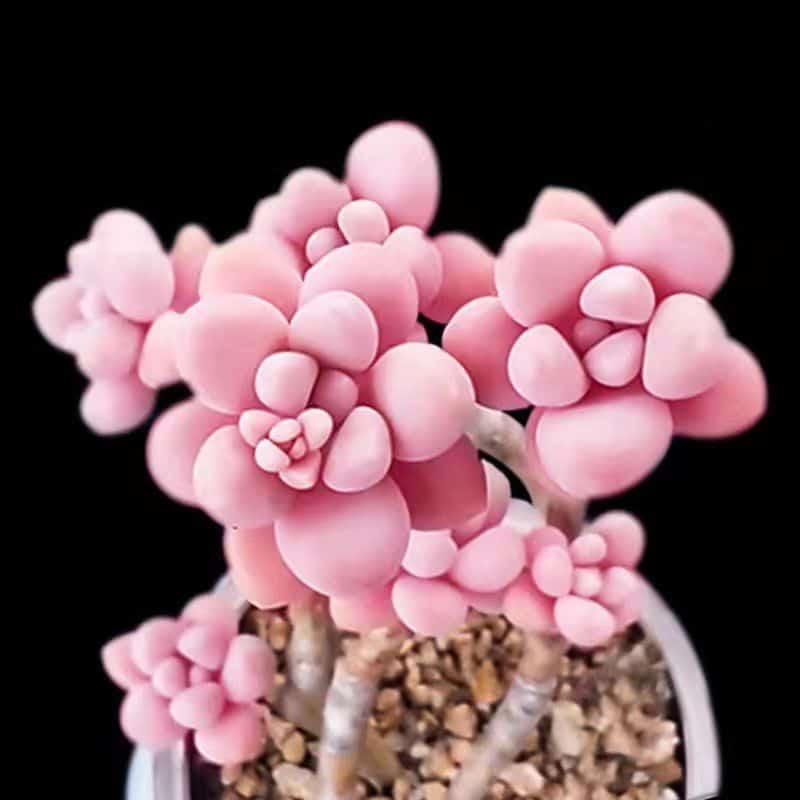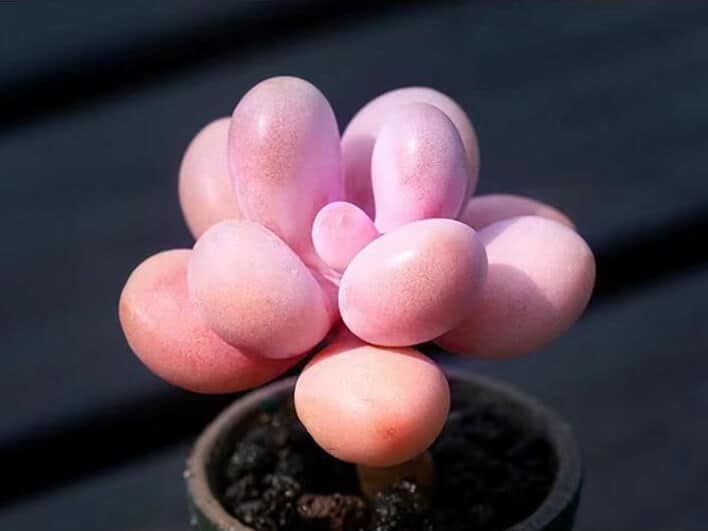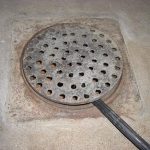The lavender succulent, also known as Graptopetalum amethystinum or the lavender pebbles plant, has long triangular leaves and lavender flowers. This desert plant is native to Mexico. It needs plenty of sun and dry circumstances.
This perennial succulent is indigenous to Mexico and blooms all summer long and into the fall, with purple-blue flowers with yellow centers. It thrives in grape-like clusters alongside mountain stream beds. The vibrant petals are a lovely addition to your collection of succulents because they stand out so much against the grey-green leaves.
Graptopetalum Amethystinum Care
It’s a fantastic choice for novice gardeners because it’s not challenging to grow. You might even have noticed these plants without understanding they were graptopetalums! Care for Graptopetalum amethystinum is straightforward; however, there are a few considerations. Basic instructions for taking care of your Lavender Pebble plant are provided below.
Sunlight
Although it may be grown outside all year round, this makes a beautiful interior plant. If growing indoors, put your graptopetalum close to a window that gets plenty of sunlight so it has constant access to bright light. Succulent plants like the Graptopetalum amethystinum can withstand both full sun and some shade. The best outcomes in development and flowering will come from full sun exposure.
However, if provided a spot to shelter from the sweltering summer heat, the Graptopetalum amethystinum will also thrive in partial sunlight. If this is the case, consider placing your succulent planter on a windowsill facing east so it can take up all of those lovely morning rays when the weather is still cool. Also, remember that most plants eventually need more sun to retain their healthy appearance and continue to blossom.
Soil
Succulent plants like Graptopetalum amethystinum demand soil that is porous and well-drained. The ideal potting mixture for these plants would be two parts coarse sand or perlite to one part cactus potting mix. Organic materials like garden compost or peat moss can be added for better drainage when using standard potting soil. Because they do not hold moisture, black lava pebbles are also perfect for creating efficient drainage.
With the right amount of water and any succulent mix that is rich in nutrients, Graptopetalum Amethystinum can grow. The greatest cactus combinations are those that aren’t overly acidic.
Water
Although drought-tolerant, lavender succulents still require watering. Between waterings, the soil ought to have dried out. In particular arid conditions, some plants may thrive only on rainfall.
It’s preferable to overwater your succulents than to underwater them if you live in a humid region. Pour any surplus water off or gently wipe away any water collecting at or close to the bottom of your plant.
Temperature and Humidity
Like other succulents, the Graptopetalum amethystinum plant requires the same temperatures and humidity levels. This often translates to a daytime high of 70 degrees Fahrenheit or 21 degrees Celsius and an evening low of 50 to 60 degrees F or 14 to 16 C. The humidity or temperature shouldn’t vary all that much. For instance, place it in some shade to keep your Graptopetalum amethystinum plant cool when it’s sweltering outside. It would be ideal for keeping your succulent plants away from direct sunshine, as this could dry up their leaves and stems. If the weather is too chilly, try placing your Amethystium close to a window that receives plenty of natural light but shields it from direct sunlight.
Fertilizer
Avoid overfertilizing your Graptopetalum amethystinum by fertilizing it once a month with a moderate water-soluble fertilizer and watering it with distilled or rainwater. Additionally, it’s crucial to utilize potting soil made especially for succulents; doing so will stop the build-up of nutrients in your soil. Yellowing leaves may indicate overfertilization; reduce watering and fertilizer until new growth occurs if you see this.

Graptopetalum Amethystinum Propagation
Leaf cuttings are a simple and effective way for Graptopetalum amethystinum to proliferate. To have some additional items in case you commit errors when propagating your initial batch of Graptopetalums, it is smart to propagate a few plants while they’re still young.
If you are familiar with succulents, you may easily propagate them by taking a leaf off one plant and sticking it in the ground. Early spring, when new growth is starting, is the ideal time to accomplish this.
You can also grow plants from stem tip clippings obtained in the summer and fall; cut the stems into two-inch sections, plant them just below the soil line, and leave about an inch of the stem above ground.
Keep plants well-watered in both situations until new roots grow. Do not disappoint when nothing happens immediately; roots take several months to form on leaves.
Graptopetalum amethystinum will carry on growing normally once rooted. They’ll develop blossoms on stalks that emerge among those leaves and offsets at the base of their plant. When offset plants begin to flower, carefully dig them up and replace them in separate pots.
Pests and Plant Diseases
Pests Diseases
Pests and diseases of various kinds afflict Graptopetalum amethystinum. Mealybugs, scale insects, aphids, leaf miners, snails, and slugs are a few of them. If you discover any of these pests, the very first thing you must do is quarantine your plant and keep it separate from other plants to prevent the spread of any diseases. Simple problems can be resolved by yourself with some water and soap or a repellent soap spray.
Plant Diseases
Overwatering the plant may adversely damage it, hence giving it only limited water.
Due to its convenient size and low maintenance requirements, the succulent Graptopetalum amethystinum has recently become increasingly popular. Lavender pebbles are a terrific accent to an outdoor or indoor succulent garden because they can withstand both heat and cold. Although the plant is native to Mexico, it is grown as an ornamental in countries like Australia, South Africa, and Argentina since it does well in hot climates.




